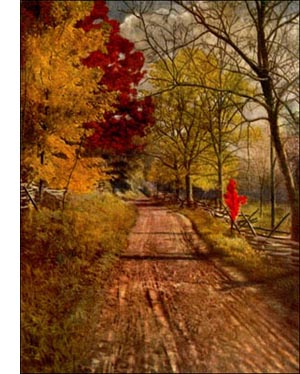Junipers
 Genus JUNIPERUS, Linn.
Genus JUNIPERUS, Linn.Evergreen trees or shrubs with pungent sap, thin, ragged bark, and short, much-divided ascending branches. Leaves usually
of two kinds, linear, spiny, free, in whorls of 3 at each joint, or scale-like, blunt, in pairs, 2-ranked, opposite, and closely appressed to twigs. Flowers in small, inconspicuous aments, dicecious or rarely monoecious. Fruit berry-like, by coalescence of fleshy scales; seeds t to 6, wingless, bony. Wood soft, close grained, durable.
The junipers are distinguished from most other evergreens by the fact that they are not cone bearers. The flowers are inconspicuous, and similar to a true conifer's, but in course of development the scales thicken and grow together, forming a sweet, berry-like fruit. On many of these berries the tips of the cone scales may be distinctly seen on the outer surface. Junipers usually show two kinds of leaves: (1) stiff, spiny, narrow ones, channelled and free; (2) minute, scale-like ones, opposite in pairs and pressed close to the twig. The sap is resinous and aromatic. The wood is hard, reddish, durable and light-in certain species pleasantly fragrant.
Thirty-five species of junipers are distributed over the Northern Hemisphere, contributing to the wealth of the world valuable woods and ornamental trees and shrubs. Our own red juniper has over thirty cultivated varieties. The narrow, tapering spire, the globe of compact green and the pigmy forms-all are well adapted to formal gardening. The effects produced by the classic cypress in warmer climates may be reproduced in Northern gardens by the use of junipers.
California Juniper Tree
Checker Barked Juniper Tree
Drooping Juniper Tree
Dwarf Juniper Tree
One Seeded Juniper Tree
Red Juniper or Red Cedar Juniper Tree
Red Juniper Tree
Rock Cedar Juniper Tree
Rocky Mountain Juniper Tree
Utah Juniper Tree
Western Juniper Tree